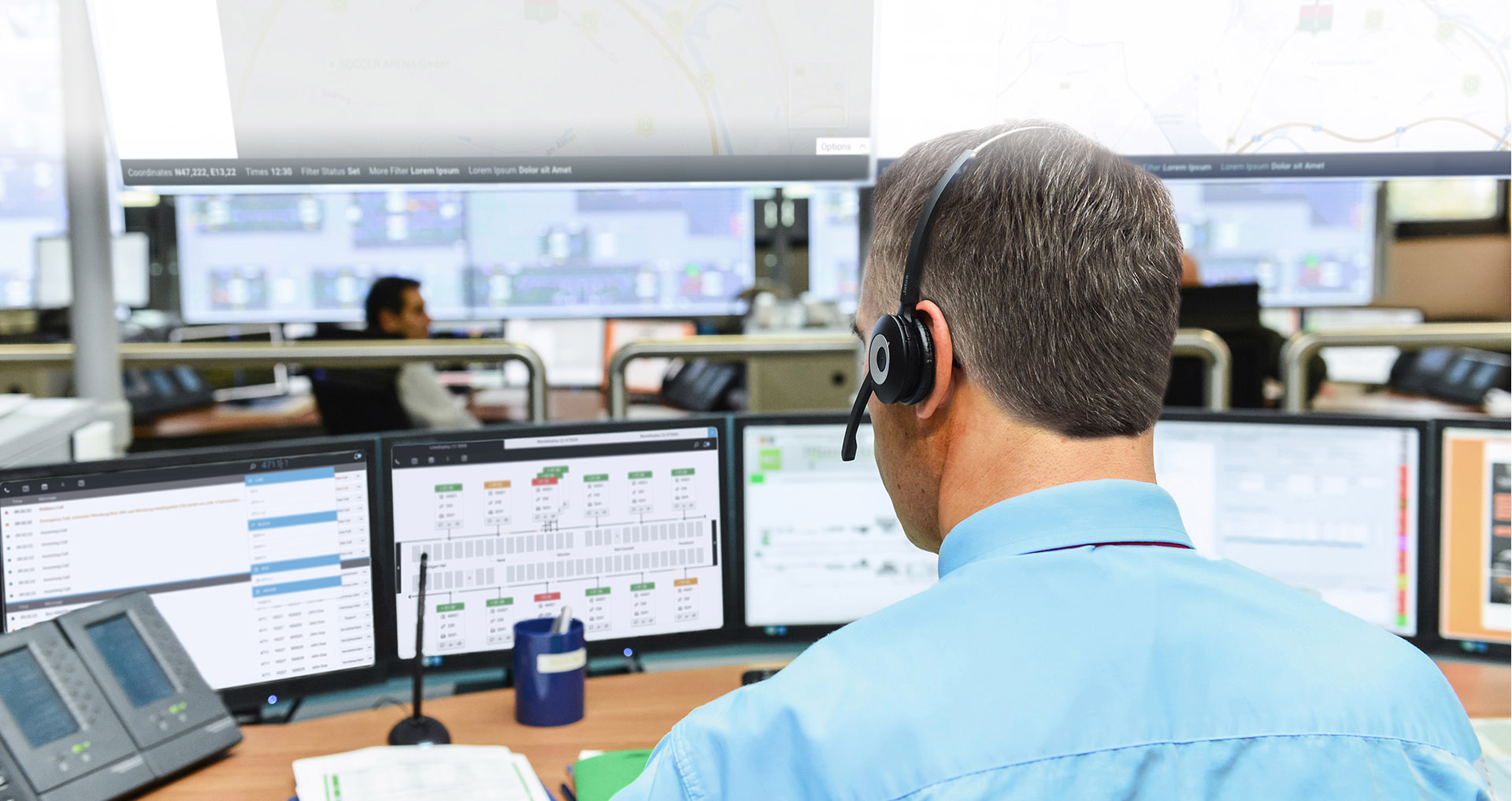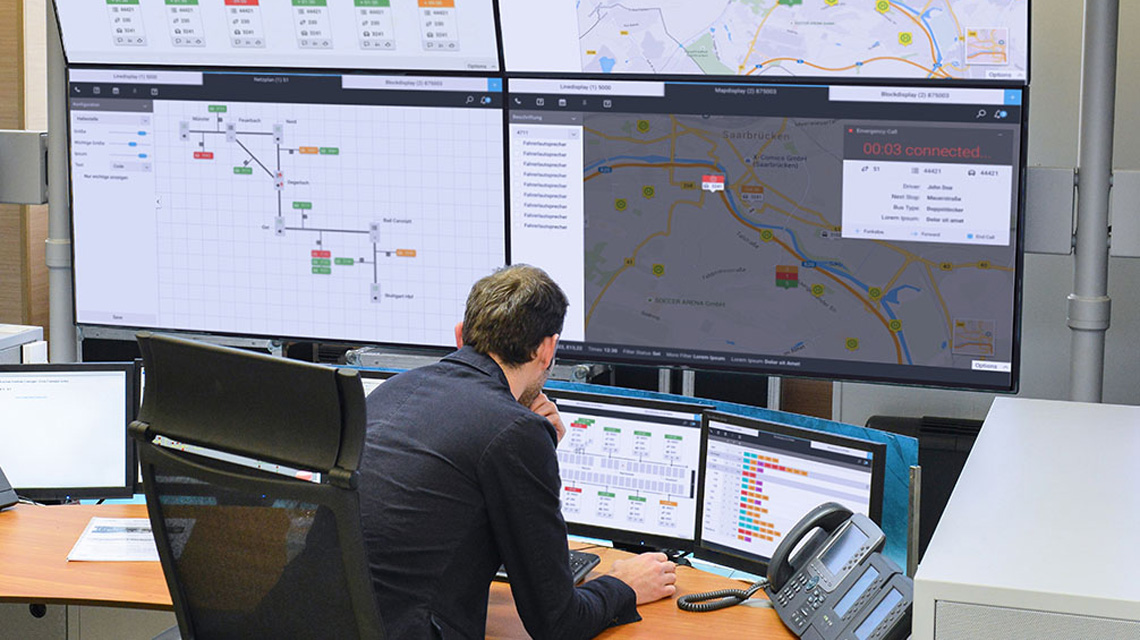Running your operations center means dealing with daily disruption headaches. The Intermodal Transport Control System delivers more than 30 Computer-Aided Service Restoration (CASR) measures to help with this task.
The control center is the beating heart of a public transit provider. Vehicles are monitored, schedule deviations are recognized, necessary dispatching measures are executed and drivers are supported.The control center is also where dispatchers must perform as mobility experts. While dispatchers are managing the fleet, the system is recalculating and disseminating real-time information to ensure passengers are properly informed.
Real-time traffic interface overlays graphical real-time traffic info on the map display so dispatchers can proactively manage service disruptions. It can also be displayed on the vehicle mobile data terminal (MDT) to enable driver-initiated alternative routing.
Real-time State of Charge (SoC) allows dispatchers an overview of charge levels for individual electric vehicles. It is also possible to define threshold values so an alert is triggered when the charge level falls below a certain threshold to ensure the dispatcher is aware.
Substitute Service or the “Bus Bridge” measure allows dispatchers to create a shuttle service to carry passengers to a planned transfer location in the event of a rail outage. With a few clicks, a new service is created and can be assigned to any vehicle prepared to handle the passenger load.
Automated incident handling ensures the consistent application of your Standard Operating Procedures (SOP) across your organization. Using a Complex Event Processing Engine (CEP Engine), dispatchers can monitor outside sources of information, like weather feeds and multiple internal sources of data.
The CEP Engine suggests actions to the dispatcher like route deviations based on real-time traffic, or can trigger restorative measures based upon schedule adherence. Users are to create their own scenarios (Sporting event, accident, road congestion, etc.) and trigger them when they happen.
Connection protection can be pre-planned in the planning tool or created ad-hoc by dispatchers - or even operators. Dispatchers can hold connections that would have been released by the automatic system, can release connections that would have been held and can manage the connection protection system as a whole to ensure passengers are not left stranded.
Ad-hoc detours allows operators to receive detour and route information and an adjusted schedule on their driver display in the case of an unplanned detour. In addition, turn-by-turn instructions on the new route are provided. The ad-hoc defined detours and information on schedule changes are automatically transferred to the passenger information system.
Multi-view dispatching allows you to combine up to four ITCS displays in one window. This makes it easier for dispatchers to get all the relevant information they need to properly assess a situation or resolve an error.
Learn more about Connection protection.




